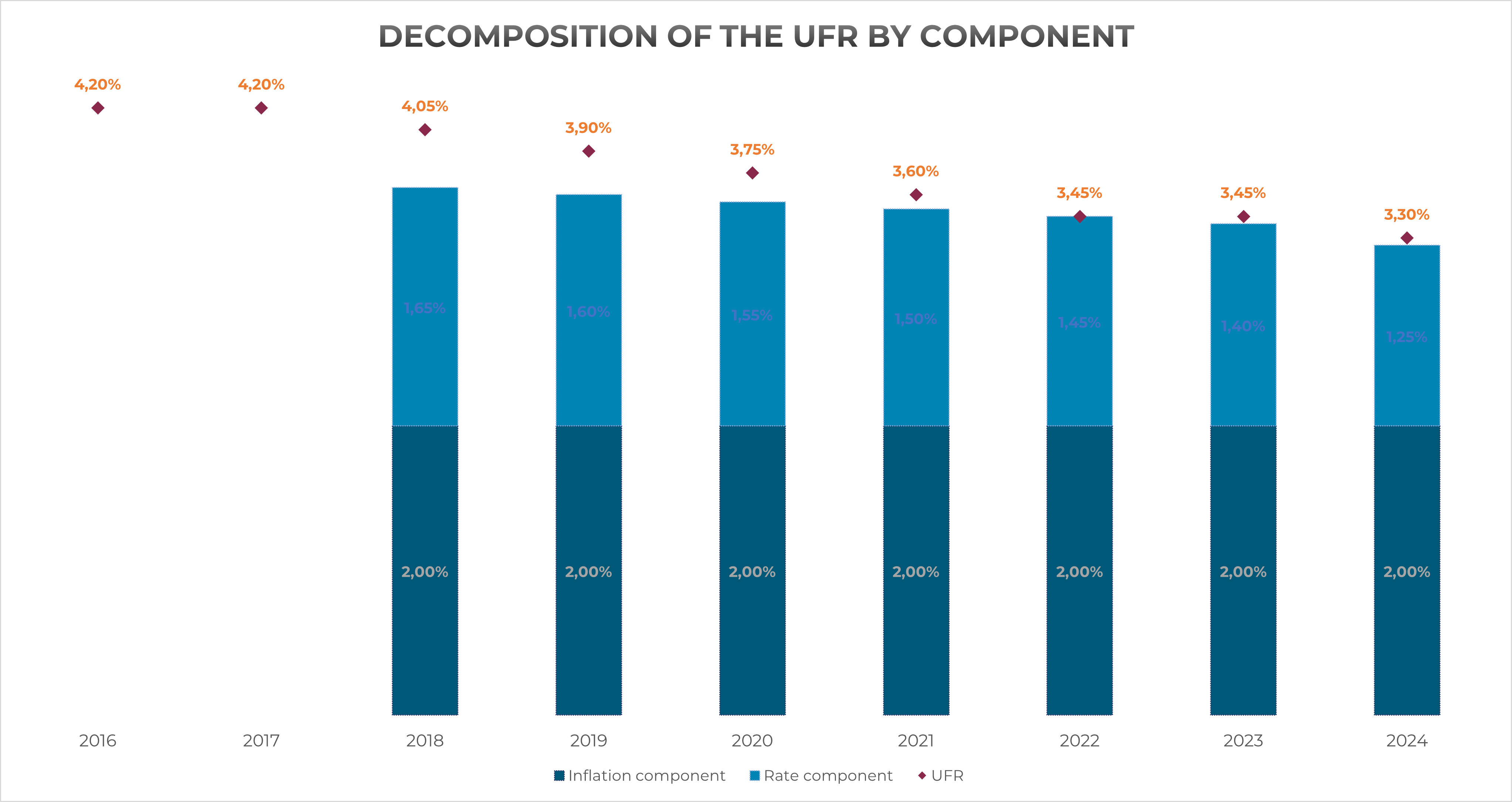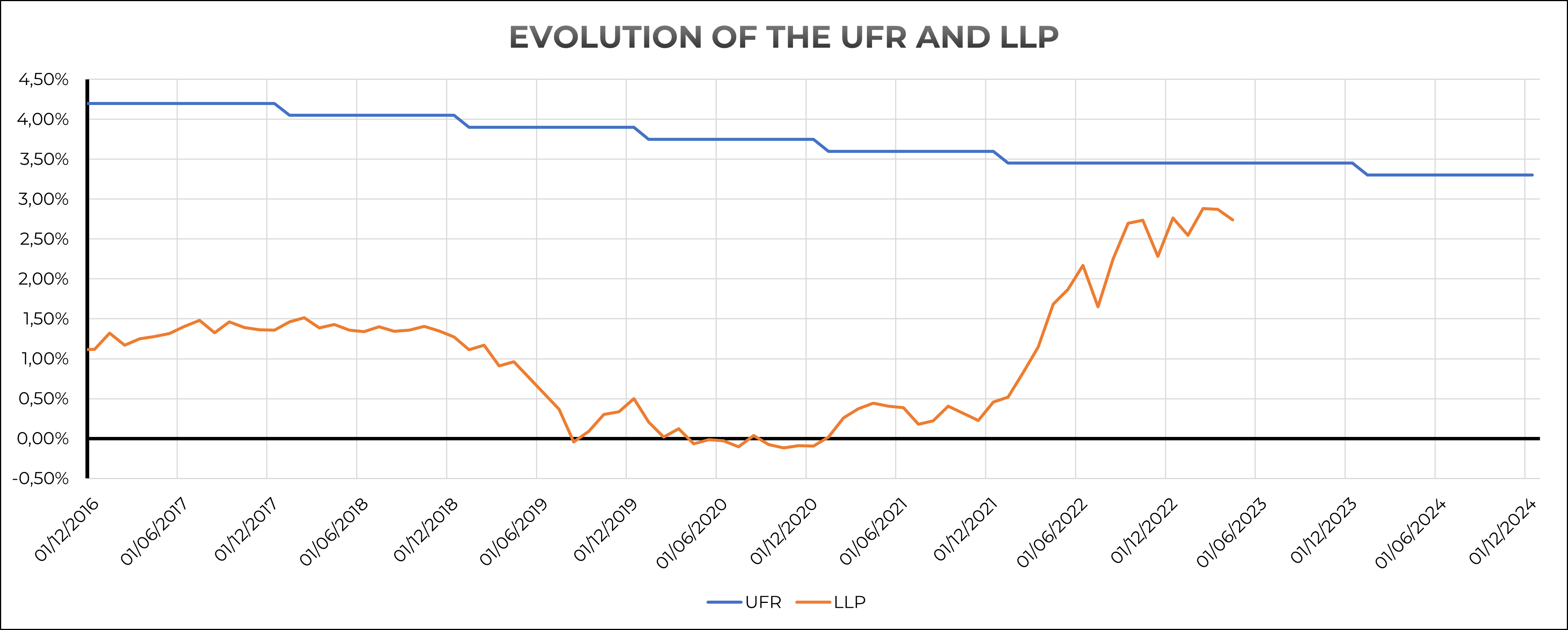The UFR: Context, Methodology, and UFR 2024
The UFR is determined for each currency and is the sum of two components: a rate component and a target inflation component.
The rate component corresponds to the averages of the real long-term rates observed since 1961 on a basket of reference markets, such as Germany, France, Belgium, Italy, United States, United Kingdom, and the Netherlands.
The inflation component, on the other hand, is most often equal to the inflation target set by the reference Central Banks. For the euro, it is equal to 2%, which corresponds to the inflation target of the European Central Bank (ECB).
The UFRn is obtained by comparing the calculated value (Sn) by summing these two components with two reference values: UFRn-1 – 0,15 % and UFRn-1 + 0,15 %.
In practice:
- UFRn = UFRn-1 – 0,15 % if Sn < UFRn-1 – 0,15 % ;
- UFRn = UFRn-1 + 0,15 % if Sn > UFRn-1 + 0,15 % ;
- UFRn = Sn else.
Thus, by nature, the UFR variations from one year to the next belong to the interval [-0.15%; 0.15%]. This corridor was intended to smooth the decrease in the UFR compared to the initial rate of 4.20%. Without this limitation, for example, the UFR for 2018 would have been 3.65% instead of 4.05%, as shown in the graph.
For 2024, the Euro UFR published by EIOPA is: 3,30 %

Evolution of the UFR and LLP and the point of view of our experts

- LLP went through three main phases:
- 2016-2018: stable around 1.5%;
- 2019-2021: stable around 0%;
- 2021-2023: upward phase with a steep slope.
- Since 2021, LLP has been converging towards UFR due to the significant rise in interest rates observed in the markets.
The main consequence of this convergence will be to influence the steepening of the yield curve, with multiple impacts on the scenarios generated by ESGs, including a distortion of the rate spread.
Furthermore, the UFR for the Eurozone is relatively stable due to the following factors:
- Its inflation component remains constant, with a target inflation rate of 2% set by the European Central Bank (ECB).
- Its interest rate component experiences minimal year-to-year changes. This can be attributed to the extensive historical data spanning over 60 years used to calculate the average.
- The implementation of a corridor helps limit potential significant volatility in the interest rate component.
In contrast, the LLP is much more volatile -as shown in the graph- and is currently experiencing a strong upward trend. If the two curves were to intersect (yield curve inversion), the implications in terms of capital reserves will be significant.
Article written by

François BAYÉ
Director – Deputy Head of Actuarial Consulting

Elie MERYGLOD
Senior Manager – Practice Modeling & Finance
Related content

How to reconcile between Solvency II and IFRS 17 key figures

Update of EIOPA guidance on contract limits and valuation of technical provisions


